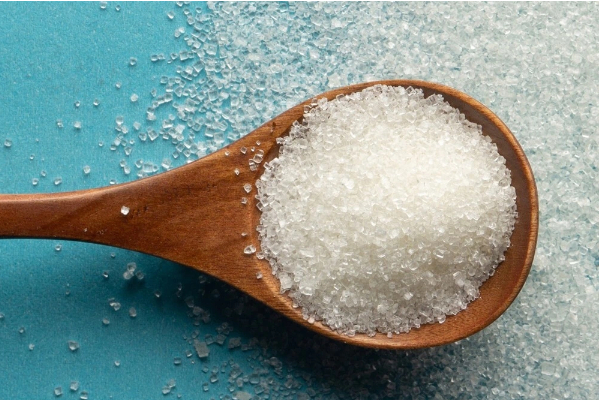Views: 222 Author: Sara Publish Time: 2025-11-03 Origin: Site








Content Menu
● Implications for manufacturers
● Case studies and current debates
● FAQ
>> 1. Is aspartame banned in any major market today?
>> 2. What does the IARC classification of aspartame imply for consumers?
>> 3. What should manufacturers consider when using aspartame in blended sweeteners?
>> 4. Are there safer or alternative options to aspartame for global markets?
Aspartame has long been one of the most widely used artificial sweeteners in foods and beverages worldwide. While many regulatory authorities have evaluated its safety and established acceptable daily intake limits, debates about its safety persist in public discourse and policy circles. This article examines the status of aspartame across various countries and regions, clarifies regulatory stances, and explores practical implications for manufacturers of health-focused ingredients, including natural sweeteners, functional polyols, and dietary fibers. Throughout, the term Aspartame remains central to the discussion as regulatory bodies balance consumer protection with industry innovation.[7][9]

Aspartame is a low-calorie artificial sweetener composed of phenylalanine, aspartic acid, and methanol. It is widely used in carbonated beverages, dairy products, baked goods, chewing gum, and tabletop sweeteners because it provides a sweet profile with minimal caloric contribution. Regulatory evaluations during the past decades have repeatedly assessed its safety under approved use conditions and established an acceptable daily intake. For manufacturers, understanding these assessments helps in formulating blended-sweetener solutions and ensuring product compliance across markets.[9][7]
- International assessments generally support continued use under established guidelines. The World Health Organization (WHO)–linked assessments classify aspartame as a possible carcinogen (Group 2B) but also reaffirm that consumption within the established daily intake limits is acceptable. This nuanced stance means that countries may permit use while encouraging ongoing monitoring and consumer education.[5][7]
- The U.S. Food and Drug Administration (FDA) has historically deemed aspartame safe under approved conditions of use, and many countries have adopted similar positions or relied on evaluations from trusted bodies such as FDA or EFSA. However, some consumer groups advocate tighter restrictions or bans, citing precautionary principles or new interpretations of risk data.[3][9]
- In Europe, regulatory bodies have allowed continued use, but there has been active public advocacy calling for bans or stricter controls in light of IARC classifications and ongoing discussions about cancer risk. These efforts often center on consumer safety, labeling transparency, and limiting daily exposure in sensitive populations.[1][3]
- Other regions, including parts of Asia, Africa, and the Middle East, show a mosaic of approvals, restrictions, and labeling requirements, reflecting local risk assessments, consumer expectations, and regulatory maturity. In many cases, aspartame remains permitted within specified intake guidelines, with some jurisdictions emphasizing monitoring and clear ingredient disclosure.[4][6]

- Product formulation: For manufacturers of health-oriented ingredients, Aspartame remains a viable option for achieving sweetening profiles while maintaining low caloric impact, especially in blended-sweetener formulations that combine multiple sweeteners to optimize taste, mouthfeel, and stability. Aligning with regional regulations and labeling practices is essential when designing products for overseas markets.[2][9]
- Labeling and compliance: Transparent labeling and adherence to regional labeling requirements help mitigate regulatory risk. Providing clear information about sugar alternatives and their intended use can support customer trust and reduce compliance friction in export channels.[2][3]
- Consumer communication: Given public interest and ongoing debate, manufacturers may benefit from proactive communication about safety assessments, ongoing monitoring, and adherence to established intake guidelines. This can build confidence among overseas partners and end consumers.[5][7]
- Regulatory agencies across multiple jurisdictions have reaffirmed safety under existing guidelines, while independent advocacy groups have pressed for stricter controls or bans based on precautionary principles and evolving interpretations of risk data. This dynamic underscores the importance of keeping abreast of the latest rulings, WHO/IARC updates, and country-specific regulatory changes.[1][5]
- The continuing dialogue around aspartame illustrates the broader tension in food safety between advancing food technology and protecting public health. For suppliers of natural sweeteners and polyols, this context highlights opportunities to emphasize alternative sweetening systems, including blends that minimize exposure to any single additive while delivering targeted sensory performance.[8][9]
Aspartame remains a widely used sweetener with a complex regulatory profile that varies by country. The overarching message for manufacturers of health-focused ingredients is to stay aligned with global safety assessments, maintain transparent labeling, and offer diverse sweetening options alongside aspartame-based solutions. By integrating natural sweeteners, functional polyols, and dietary fibers into blended-sweetener formulations, overseas manufacturers can achieve desirable sensory profiles while navigating the evolving regulatory landscape. The ongoing dialogue among regulators, industry groups, and consumers will continue to shape the acceptance and application of aspartame in the global market.[7][9]

No universal ban is in effect in major markets; however, many jurisdictions regulate its use, require labeling, and set acceptable daily intake limits. Regulatory bodies such as the WHO and FDA maintain safety evaluations under approved conditions, while certain consumer groups advocate stricter measures based on precautionary principles.[7][9]
The IARC classifies aspartame as possibly carcinogenic to humans (Group 2B). This classification signals potential concerns but does not establish a definitive cancer risk at typical consumption levels, and it coexists with established intake guidelines intended to ensure safety.[5][7]
Manufacturers should consider regional regulatory permissions, labeling requirements, consumer perception, and stability in finished products. Using blends that include other sweeteners can optimize taste and reduce potential regulatory exposure while maintaining a favorable caloric profile.[9][2]
Yes, many alternatives exist (e.g., stevia, sucralose, sugar alcohols, and novel sweeteners). A blended approach tailored to target markets can balance sweetness, mouthfeel, and regulatory compliance. This is particularly relevant for health-focused ingredients suppliers offering natural sweeteners and polyols.[8][2]
Emphasize adherence to international safety guidelines, transparent labeling, and willingness to provide data from credible assessments. Highlight your broader portfolio of natural sweeteners, polyols, and dietary fibers to support diversified product solutions and reduced regulatory risk.[2][9]
[1](https://www.foodwatch.org/en/aspartame-a-possible-carcinogen-foodwatch-the-cancer-league-and-yuka-launch-a-european-petition-calling-for-a-ban)
[2](https://www.caldic.com/zh-hans-cn/markets/food-beverage/beverage/)
[3](https://www.euronews.com/health/2025/02/05/no-place-in-our-food-consumer-groups-launch-petition-to-ban-aspartame-in-europe)
[4](http://www.danone.com.cn/about-danone/at-a-glance/danone-china.html)
[5](https://www.reuters.com/business/healthcare-pharmaceuticals/what-is-aspartame-what-do-new-who-rulings-cancer-consumption-mean-2023-07-13/)
[6](http://www.healthfitfood.com/about_cpzx/cpzxf80.html)
[7](https://www.who.int/news/item/14-07-2023-aspartame-hazard-and-risk-assessment-results-released)
[8](https://en.wikipedia.org/wiki/Aspartame_controversy)
[9](https://www.fda.gov/food/food-additives-petitions/aspartame-and-other-sweeteners-food)
[10](https://yuka.io/en/aspartame-investigation/)
